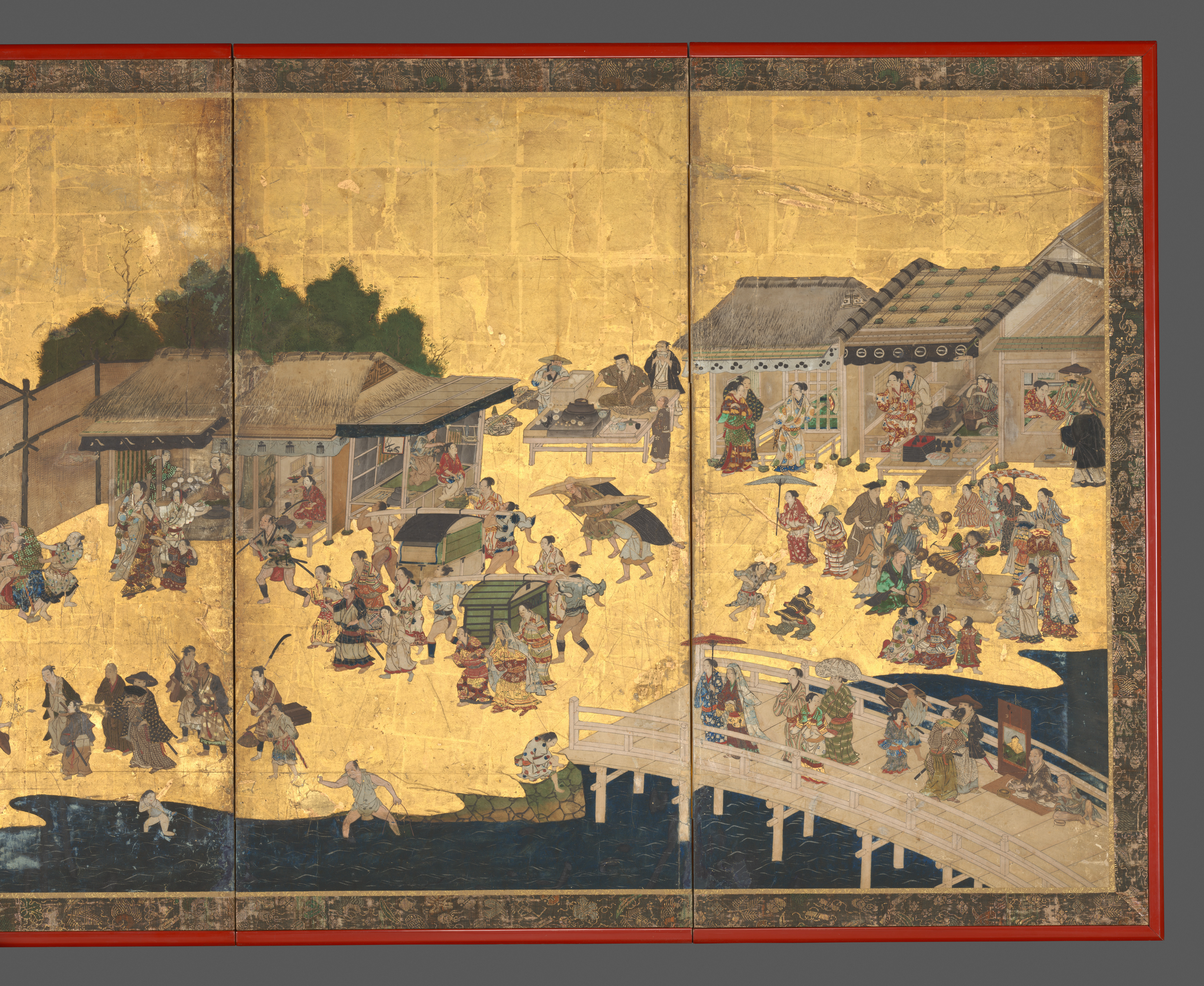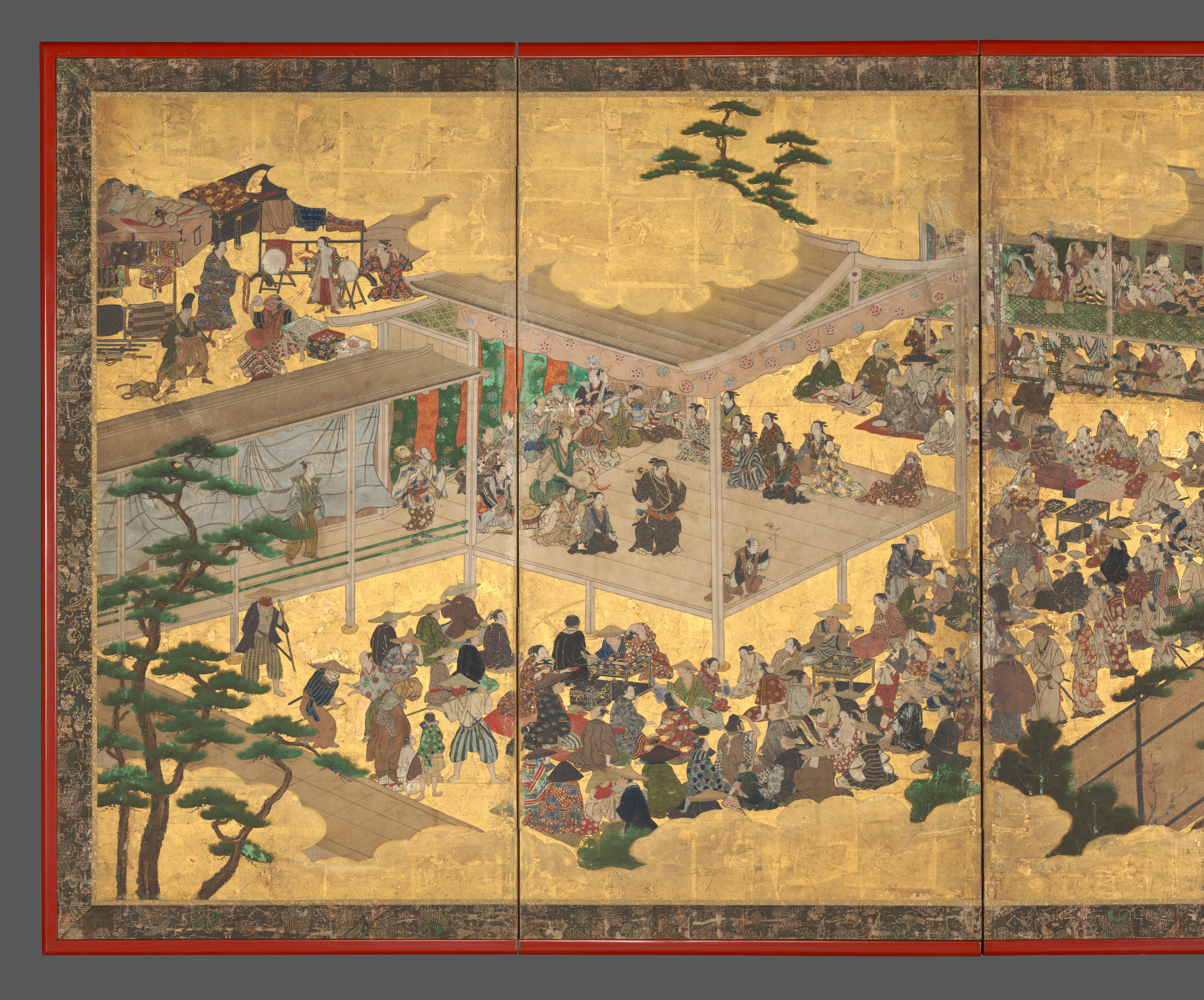Women’s Kabuki
Studio of Kano Takanobu Japanese
Not on view
The focus of this composition is a young woman dressed as a gallant samurai, performing the Kabuki skit Chaya asobi, or “Teahouse Entertainments.” Her comic sidekick, the manservant Saruwaka (Young Monkey)—also played by a woman—holds a branch of maple leaves or flowers.
In its earliest phase, Kabuki was performed by female dancers or courtesans playing both men and women in sexually provocative skits. Kabuki as we know it today—a respected form of classical theater with complex plots performed by male actors in men’s and women’s roles—did not emerge until the end of the seventeenth century. This recently rediscovered work is one of a pair; its mate depicts merrymaking in the Kitano district of Kyoto.
Due to rights restrictions, this image cannot be enlarged, viewed at full screen, or downloaded.
This artwork is meant to be viewed from right to left. Scroll left to view more.





